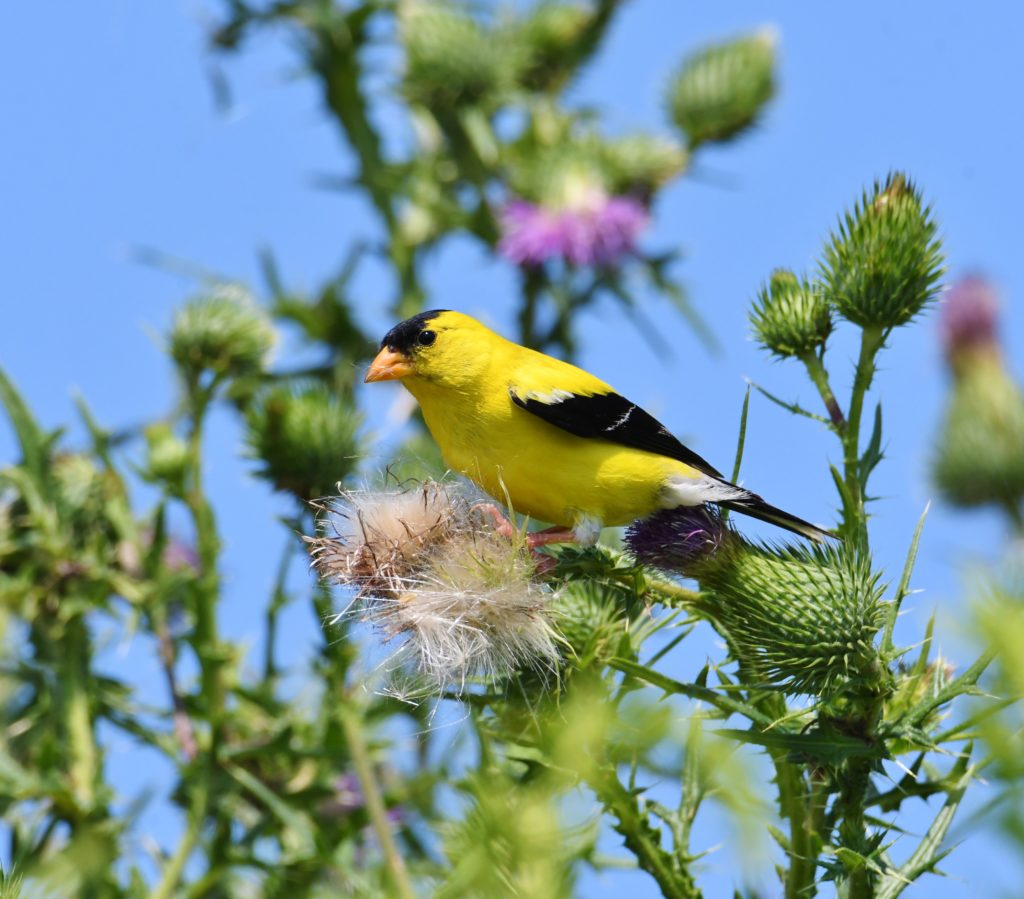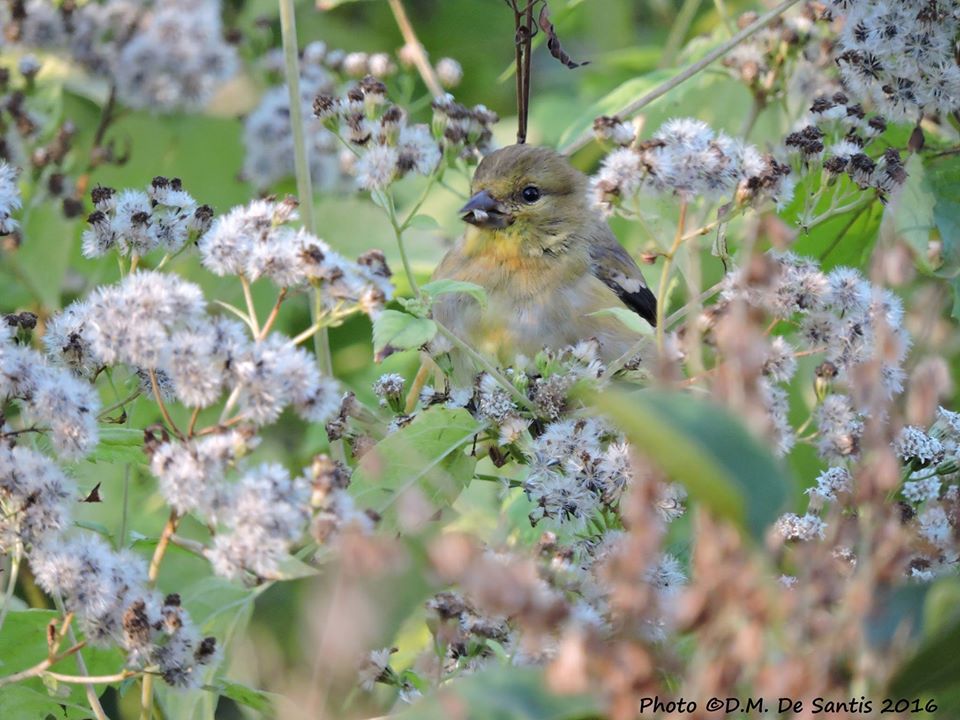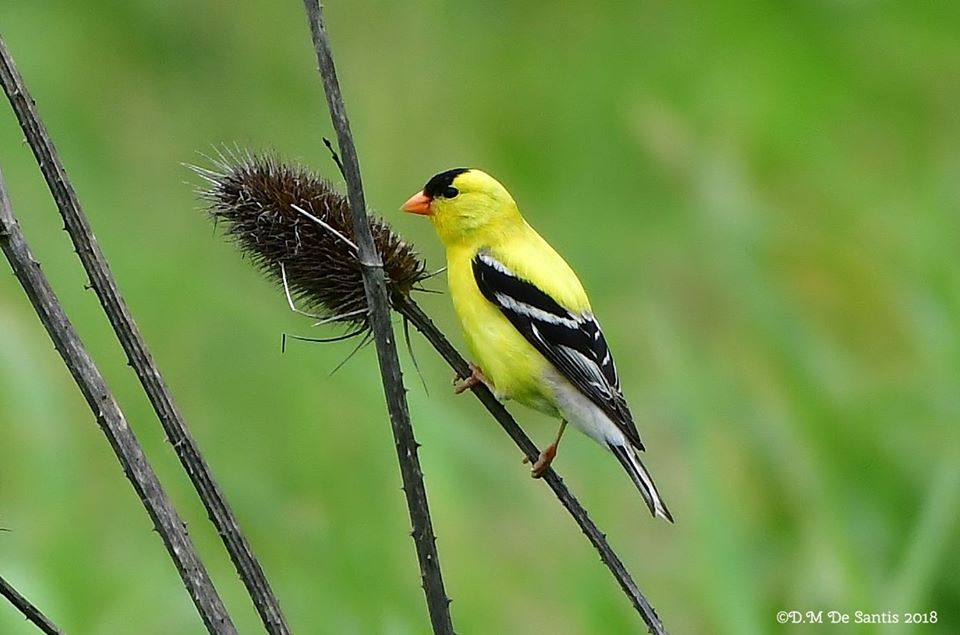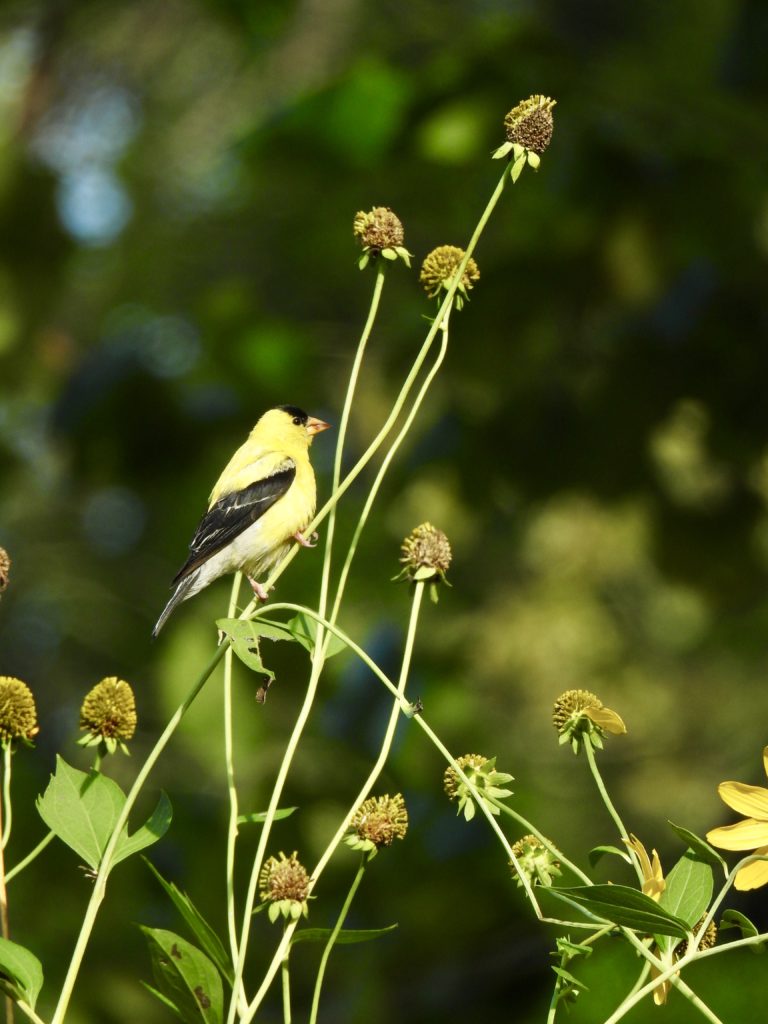
By now I am sure everyone has read the very disheartening report by National Audubon regarding Climate change and the future of our birds –https://www.audubon.org/climate/survivalbydegrees. The report’s findings say as many as 389 out of 604 species of birds could be at risk if we don’t substantially curb carbon emissions, starting now.
There are many things we all need to do on national, state and local levels to stem the tide of climate change to not only protect our birds but also save life as we know it for future generations. I very much believe in the power of the individual and what we can accomplish in the here and now when we join together and stand up to do the right thing.

Planting native plants whenever and wherever we can is one of the most important things we can do to have an immediate impact to help birds through the stresses of climate change. Even our very own State Bird, the American Goldfinch, is one of the many birds that are under serious threat, not only here but in 23 other states. It’s my opinion that if we could all join together and create “Goldfinch Gardens” in every backyard, schoolyard, place of worship or business, or for that matter anywhere we would have an immediate positive effect on the environment and could help be part of the solution to help our beloved State Bird from being lost to New Jersey forever.

Climate change is and will change wildlife habitat, and as our Goldfinch goes the loss of open fields and meadows and the native plants that grow there will be devastating if allowed to continue. Of course, we need to fight rampant habitat destruction everywhere in the state but also we can help tilt the balance in the birds’ favor by creating our own Goldfinch habitats in our own backyards.
Now I have to admit we at Bergen Audubon have created some great Goldfinch gardens in the area, but it was almost by accident as our butterfly gardens proved time and time again that Goldfinches cannot read signs as they came into our restored butterfly habitats like they belonged in them. And in all truth it was created for them because as we learned very quickly by restoring native habitat for one species many more creatures get the invitation very quickly as did our Goldfinch.

These wonderful backyard wildlife gardens will not only help our Goldfinch but will also help birds like Song Sparrows and Brown Thrashers, two other birds that are under threat from climate change. In the same way the native plants will help to save our pollinators who are also very much under threat from the onslaught of climate change.
Now comes the hard part. I will try my best to give you a few of my favorite native plants for Goldfinch, although like a very wise woman once told me trying to pick out your favorite plants is like trying to pick your favorite child, it just can’t be done! But ready or not here we go.
Anise Hyssop – Agastache foeniculum – If there is a perfect native wildflower this is it – deer resistant, smells great, attracts butterflies, hummingbirds and pollinators and of course the Goldfinch can’t resist the seeds !
(Also Agastache Nepatoides -Giant Yellow Hyssop is less common but works great in the Goldfinch garden as well)
Purple Coneflower – Anyone that planted this wonderful wildflower in their backyard has surely witnessed the Goldfinch going crazy on the flower heads when they go to seed. Not very deer resistant so may be best to cage up the plant when using it in your garden

Cut Leaf Coneflower –Rudbeckia laciniate– If you want a flower that is deer resistant, will naturalize the area and attract Goldfinch like a magnet this is the wildflower for you! We introduced this plant to many gardens in the area including DeKorte Park and it has been doing a wonderful job helping the Goldfinch and many other birds as well as pollinators
Milkweeds – Now you would not think of the plant that Monarch Butterflies depend on to survive helping the Goldfinch, but it does. Not only does the Goldfinch eat the seeds and use the silky seed pods to make their nest but this past year I watched many Goldfinches return time and time again to eat the tiny orange Aphids that feed on the milkweeds. The Milkweed provides an important food source but also gets natural pest control courtesy of the Goldfinch. When your garden is in balance it’s an incredible thing to watch how it all works together.
Asters – Beautiful late blooming species such as New England Asters and Aromatic Asters provide great color to the fall garden and also help the Goldfinch as well as pollinators as they search for the last nectar sources of the season
Sunflowers – Woodland Sunflower (Helianthus divaricatus ) There are many varieties of sunflowers that work well for the Goldfinch. This one is popular because it can take some shade and the birds love it.
Native Grasses- Switchgrasses, Big and Little Bluestem and Indian grasses are some of the great native plants that should always have a place in the home landscape. Not only do they help our birds and butterflies but they make the garden look great in all four seasons.
Birch Trees-Both River Birch and Gray Birch provide seed catkins that our Goldfinch relish. Birches will also bring in winter finches such as Redpolls and Pine Siskins
Sweetgum Trees – I know many home owners curse these native trees that drop those funny little balls on your driveway but just remember the balls are packed with seeds that many birds including Goldfinch depend on.
Annuals – Many folks have very limited space to garden or just love container gardening, so by planting some annuals you can still have a Goldfinch garden almost anywhere you are. Cosmos, Zinnia and Mexican sunflower and some of the best annuals to use in the wildlife garden.
Let Dandelions Grow! – Although not native, dandelions provide nesting material and seeds for the Goldfinch in the urban landscape so no need to waste your time and effort to rid them from your lawn; just let them go and enjoy the show!

Provide a Finch Feeder – While restoring habitat is by far the most important thing we can do, providing Thistle seed (also called Nyjer) will help offer sustenance for the Goldfinch especially during hard times of the year. By keeping the seed fresh and feeders clean you can add much enjoyment to the Goldfinch garden
Don’t Forget Water – Try to provide a small shallow bird bath to make it easier to find a water source and keep their feathers clean. In winter use an electric heated birdbath. They work great, are safe and provide water in the coldest weather
Don’t forget to certify your Wildlife Garden! Bergen County Audubon has a great FREE program that lets you certify your Wildlife Garden wherever it is. You get a free metal sign and certificate. The program helps us track all the restored habitats that are in backyards and elsewhere. For more info go to http://bergencountyaudubon.org/cwg/
Of course by now many of you are angrily gathering in the streets with torches and pitchforks in hand screaming, “why didn’t you mention Liatris or Goldenrod or many other great natives!!” So please e-mail me and let me know what works for the Goldfinch in your Goldfinch garden and I will get the word out.
We all must begin now working together to curtail carbon emissions and do our best to slow the progress of climate change. By Creating places in our backyards such as Goldfinch gardens we can help stem the tide of habitat loss and the effects of climate change , two issues that threaten the very future of our birds. At the same time bringing nature into our backyard will help all of us have much happier and healthier lives for generations to come.

Thank you for this, Don!
Thanks for reading